|
|
|
Sort Order |
|
|
|
Items / Page
|
|
|
|
|
|
|
| Srl | Item |
| 1 |
ID:
078969


|
|
|
|
|
| Publication |
2007.
|
| Summary/Abstract |
Beginning in 1974, the construction of the Baikal-Amur Mainline Railway (BAM) dominated public life in the Soviet Union for the next decade. Declared complete in 1984, BAM was arguably the greatest and most costly construction feat in post-war Soviet history. Officially, the mainline was to serve as the "path toward communism" that would unite all Soviet citizens. This article explores the crime and corruption that surrounded the propaganda-driven world of the BAM. Although the railway led to few concrete accomplishments in either the industrial or social development of the USSR, the sociological and criminological consequences of BAM were profound. The highly visible presence of both petty and hard-core criminals on the railway revealed that life on the rails was not as progressive or futuristic as the state claimed. Instead, the dynamics of crime and control that intersected during the BAM's ten years of prominence revealed that the peculiarities of human nature, not what the state termed "communist morality," defined those who worked on the project
|
|
|
|
|
|
|
|
|
|
|
|
|
|
|
|
| 2 |
ID:
126199
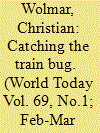

|
|
|
| 3 |
ID:
126197
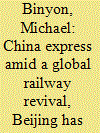

|
|
|
| 4 |
ID:
152526


|
|
|
|
|
| Summary/Abstract |
Over the past three decades, we have seen a flourishing of scholarship which explores the emerging political spaces and variegated scales of governance in China. This research draws on political economic tradition to argue that the way in which cities and regions are governed is indeed infused with socio-political struggles which are proliferating at a range of spatial scales. Such theoretical interpretation is illuminating, but it has been subject to increasing criticism from the poststructuralist approach that views scale as an epistemological construct. This paper uses the Pearl River Delta Intercity Railway System (PRD-ICRS) as a case study to challenge the onesidedness of both the political economy tradition and the poststructuralist approach in reading scale. It employs the “scale politics” thesis to argue that scale is more than a material existence (or institutionalised structure) that represents a particular arrangement of political power, being subject to perpetual transformation through regulatory projects and strategies. It is also a “representation trope” deployed in political discourses to acquire persuasive power to frame and legitimise these projects and strategies. Scale is thus both material and discursive. Understanding the two moments of scale enables a fuller dissection of political transformation.
|
|
|
|
|
|
|
|
|
|
|
|
|
|
|
|
| 5 |
ID:
182801
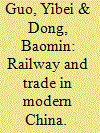

|
|
|
|
|
| Summary/Abstract |
There are controversies on the trade promoting effect of the railroad in modern times in the existing literature. We estimate the impact of the railway on domestic trade through forward linkages using an Eaton-Kortum model with county-commodity level data in Shandong and Hunan provinces in 1933. We show that the railway significantly decreased the trade cost and improved bilateral trade in Hunan and Shandong provinces. In particular, for every 10% decrease in geographical distance, the value of bilateral trade increased by 8.98%. In addition, our results on the existence of provincial border effect in Hunan and the disappearance of it in Shandong, imply that the emergence of railway contributed to the removal of provincial border effect. Furthermore, we find that counties with railway connections had higher per capita output, especially for those with a larger manufacturing sector. Our results echo those found in Andrabi and Kuehlwein (2010) and Donaldson (2018) for British India and Pérez-Cervantes (2014) for the US.
|
|
|
|
|
|
|
|
|
|
|
|
|
|
|
|
| 6 |
ID:
121983


|
|
|
|
|
| Publication |
2013.
|
| Summary/Abstract |
Recent studies have stressed the need for micro-histories of the environment so that important differences and similarities at local, regional and national level might be revealed. This paper analyses the process and patterns of environmental degradation at regional level by taking the case of deforestation in colonial Punjab by studying its implication at the level of empire. More specifically, it examines three aspects of how the operation and expansion of railways from 1869 to 1884, a peak period of railway expansion, affected the forests of the Punjab's plains. First, the paper analyses the reasons for large-scale railway expansion in the Punjab by discussing spatial and temporal expansion. Secondly, the impact of the railway firewood demand on the Punjab's forests between 1860 and 1884 is examined, specifically, the conditions that facilitated the increased dependence of the railways on firewood. Next follows an examination of the temporally varying nature of deforestation, given that railway firewood demand was determined by railway line openings. This section also includes a discussion on the nature of the colonial state response to the deforestation crisis and its role in maintaining the fuel supply to the railways. Finally, in the context of deforestation in the Punjab, the paper discusses how and why railway fuel changed from firewood to coal.
|
|
|
|
|
|
|
|
|
|
|
|
|
|
|
|
| 7 |
ID:
092610
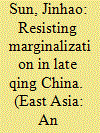

|
|
|
|
|
| Publication |
2009.
|
| Summary/Abstract |
From the mid-19th century, China began to experience drastic changes such as bureaucratic corruption, popular insurgence, the waning of the central imperial power, and the decay of the Grand Canal, which had been the lifeline for the whole empire during the late imperial period. The abolition of grain tribute shipping, the withdrawal of the canal and canal-related hydraulic system, and then the disruption of the canal channel in the north resulted in the decline of most urban centers along the canal's course, including Jining, a great canal metropolis in southwestern Shandong province. Furthermore, the overwhelming intrusion of Western capitalist-dominated globalization dramatically turned these interior urban centers into hinterlands. Jining found itself downgraded to a peripheral status but did not decline like most northern cities and areas. This paper examines the extraordinary undertakings by Jining's powerful and open-minded elites who largely constrained the locality's decline and vigorously worked towards its modernization in the last decades of the Qing. This local story illustrates an example of a partially successful Western urban transformation in inland China
|
|
|
|
|
|
|
|
|
|
|
|
|
|
|
|
| 8 |
ID:
110997
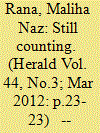

|
|
|
| 9 |
ID:
121982
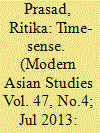

|
|
|
|
|
| Publication |
2013.
|
| Summary/Abstract |
This paper traces the establishment of standardized railway time in colonial India between 1854 and 1905, and explores how the colonized-as passengers and population-negotiated the temporal re-structuring introduced through railways. Millions were affected by the process through which the time of a single meridian was selected as an all-India railway time, and gradually deemed civil time, continuing even today as Indian Standard Time. The paper explores everyday responses to this dramatic change in 'time-sense' engendered through railways, both as speedy transport and as standardized time. This allows for a historical analysis of how individuals and societies deal in practice with abstract technological transformations, and of how colonized populations have navigated the modernizing intervention of imperialist states. It argues that the ways in which the population of colonial India accepted, contested, and appropriated the temporal standardization instituted through railways and railway time challenged imperial policies determined by reified presumptions of metropolitan versus colonial 'time-sense'. Since these responses were often analogous to how people and societies across the globe were responding to temporal standardization, they disrupt imperial strategies that used time-sense to locate colonized populations outside of History, in effect excluding them from their own present. They thus serve to materially de-stabilize a narrative of colonial time-lag and to reclaim the historical present as a time in which the colonizer and colonized exist contemporaneously. Consequently, they reconfigure modernity as an experiential rather than as a normative historical present.
|
|
|
|
|
|
|
|
|
|
|
|
|
|
|
|
| 10 |
ID:
141813
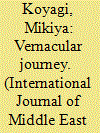

|
|
|
|
|
| Summary/Abstract |
Exploring how railway technology was incorporated into the everyday lives of Iranians during the second quarter of the 20th century, this article focuses on spatial discourses and practices around the Iranian railway. The first part investigates Iranian journalists' construction of the railway traveler prototype as the propagator of modernity prior to the completion of the Trans-Iranian Railway in 1938. The second part shows how in the 1940s the railway space became a microcosm of the heterogeneous Iranian nation, and explores how middle-class travelers experienced the railway space. I argue that the railway space, rather than creating a homogeneous experience of railway journeys, was conducive to fragmented experiences among its diverse occupants, who were divided by religion, socioeconomic status, cultural orientation, and ethnicity. The visibility of heterogeneity in the railway space compelled modern middle-class travelers to consolidate their class identity and distinguish themselves from the rest of Iranian society. Wanting to achieve a homogeneously Europeanized Iran, they also felt compelled to travel the country more extensively to create a national community connected through direct interaction.
|
|
|
|
|
|
|
|
|
|
|
|
|
|
|
|
| 11 |
ID:
191697
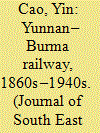

|
|
|
|
|
| Summary/Abstract |
In the late nineteenth century, British commercial interests in Asia and back home visualised a railway connecting British Burma with inland China, which they saw as a vast unexplored market. British engineers and adventurers were then employed by the commercial bodies to investigate the economy and geography of Yunnan and Upper Burma for the project. The railway was eventually rejected by the British as being unviable and unprofitable. The colonial knowledge created by these missions (in the form of travelogues, survey reports, interviews and studies) was later interpreted by Chinese nationalists as evidence of Britain's ambitions to colonise southwest China in 1905 (the Russo-Japanese War) and 1927 (the Northern Expedition) when the Chinese nation was in deep crisis. But the outbreak of the Second Sino-Japanese War led the Chinese Nationalist government to reconsider the Yunnan–Burma railway as necessary infrastructure for obtaining foreign supplies to save the nation. The colonial knowledge produced by British explorers and merchants earlier was reinterpreted by the Nationalists to try to persuade the British authorities to construct the Burma section of the railway. By tracing the history of this failed project, this article argues that nationalist understandings of colonial infrastructure were far from fixed and consistent. It recounts the circulation of colonial knowledge on the Yunnan–Burma railway from the late nineteenth to the early twentieth century, showing how different nationalist agents in Asia interpreted and reinterpreted colonial infrastructure at various critical periods.
|
|
|
|
|
|
|
|
|
|
|
|
|
|
|
|
|
|
|
|
|